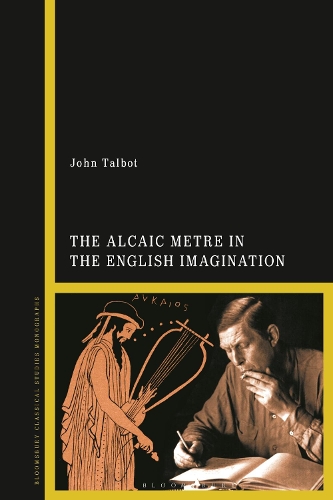
The Alcaic Metre in the English Imagination
(Hardback)
Available Formats
Publishing Details
The Alcaic Metre in the English Imagination
By (Author) Dr John Talbot
Bloomsbury Publishing PLC
Bloomsbury Academic
14th July 2022
United Kingdom
Classifications
Professional and Scholarly
Non Fiction
Comparative literature
Poetry / Poems
821.04
Physical Properties
Hardback
240
Width 236mm, Height 160mm, Spine 20mm
520g
Description
This book reveals how a remarkable ancient Greek and Latin poetic form -- the alcaic metre -- found its way into English poetry, and continues shaping the imagination of poets today. English poets have always admired the extraordinary beauty and intricacy of the alcaic stanza (Tennyson called it the grandest of all measures) and their inventive responses to the ancient alcaic have generated remarkable innovations in the rhythms, sounds and shapes of modern poetry. This is the first book-length study of this neglected strand of English literary history and classical reception. Attending closely to the rhythm and texture of their verses, John Talbot reveals surprising connections between English poets across five centuries, among them Mary Shelley, Milton, Marvell, Tennyson, Edward FitzGerald, Wilfred Owen, W. H. Auden and Donald Hall. He gives special attention to a flourishing of English alcaics during the late twentieth and twenty-first centuries, and what it suggests about the changing place of classics and poetic form in contemporary culture.
Reviews
This book offers an original study of the reception/appropriation of the so-called Alcaic strophe in English-language poetry, and through deft close readings of several poems from the early modern period up to today rightly demonstrates that a neglect or ignorance of the use of classical metrics comes at the cost of a dimension of poetic expressiveness. -- Peter Liebregts, Professor of Modern Literatures in English, Leiden University, The Netherlands
Author Bio
John Talbot is Associate Professor of English Literature at Brigham Young University, USA. He publishes widely on classical and English literary relations, poetic form and literary translation. He is the author of The Well-Tempered Tantrum (2004), Rough Translation (2012) and contributed to the multi-volume Oxford History of Classical Reception in English Literature. With Victoria Moul, he is co-editor of C. H. Sisson Reconsidered.
